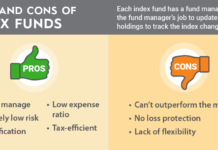It is hard to know what you want to do in life. Most students people graduate from university and have a plethora of options that await. This is especially true for those that study non-professional degree and business disciplines. A business major could get a job at an oil company or a bank doing functions ranging from sales to accounting. Many people in their first jobs will be unhappy with their choice. Having never experienced the work before, it’s not difficult to find yourself in a job that is not enjoyable. The good news is that it’s not terribly difficult to transition to a better job at an early stage in a career via returning to school.
Going back to school is one of the best ways to change careers but is also a risky time financially. Prospective students need to ensure that there is a way to pay for their education while still covering living expenses. Here are three ways that graduate degrees are financed.
1. Company Sponsorship
The first way is via company sponsorship. Some companies, particularly banks and consultancies, will sponsor the cost of student’s education, most typically for an MBA degree. The logic of the companies is that an advanced business education for high performing employees will put them on the path to company leadership. Being able to function in a variety of roles is important for leaders, and an MBA education can equip students to do this. While finances will not be an issue for these students during the program, generally companies have a clause that says they must return and work for a set amount of time. If a student does not do this, they will need to pay back the company for the cost of education. This means that any student who is not completely committed to a career within a certain company should think very carefully of the costs pursuing a sponsored education.
2. Your Savings as Investment
The second way to finance education is via existing savings or another source of income. Because most returns to education tend to happen early in life when savings are smaller, it is unlikely that most students will have enough money to finance an education on their own. For those lucky to have rich parents, they can turn to the bank of mom and dad for financing. For others, it is worth considering part time degrees designed for people still in work. This allows students to continue to work full-time while studying and minimizes the opportunity cost of getting a qualification. Money is still coming in, so although there is a cost for the education, the financial strain is minimized.
3. Student Loans
The final method of financing is loans. Loans are obviously more risky than other financing methods, but they do allow people without significant savings to still return to education. For students taking loans, it is important that they pay them back as soon as possible after graduation to minimize costs. Interest can pile up and cripple someone’s earnings for a long time. It is also important for someone with loans to be frugal during the educational program. The less money is spent, the faster the loans can be paid off.
Summary
Regardless of how someone’s education is financed, there is one rule that everyone should follow, create a budget. Money from a scholarship or from savings may not allow students to live the same lifestyle while they were working full time. It is important to ensure that plans are made to ensure that the money will last for the length of the programCarrC and that there is an additional amount set aside for unforeseen costs. A rainy-day fund is especially important for the period after graduation, when a job offer may not arrive immediately. Returning to education is risky and expensive. But with the correct financial planning, a return to education allows a person to change to a more rewarding career.












